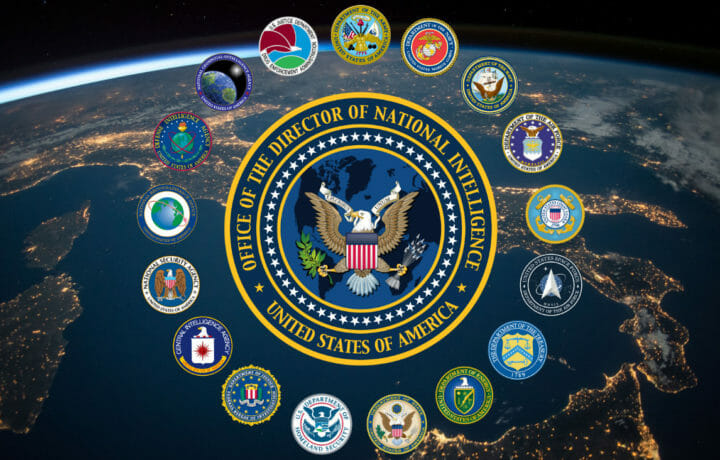Any intelligence service intends to provide its leadership with current, actionable data on the adversary. It does so by placing its sources where they can determine the truth of what that opponent’s capabilities and intentions are. These intentions are then compared to an opponent’s real capabilities. Knowing intent and the capability to accomplish that intention is why constantly updated intelligence is critical. We want to find out what our adversary can do, will do, and how. We want to prevent surprises on the battlefield.
is actionable Intel a gamble?
The Germans in World War II knew there was no real ability of its Polish or Soviet enemies to withstand piercing, targeted tank attacks. So, they massed their relatively small, but well-trained armor columns to win gigantic initial victories. Likewise at Pearl Harbor, the Japanese were able to exploit our lack of forewarning. They hit where our intelligence was insufficient to anticipate such a bold, strategic move against our Pacific fleet. Had intelligence anticipated, history would have been different.
Today’s security measures are instituted to protect our cleared information and capabilities. This protection is based upon what we know of the adversary. Of course, standard threats demand standard countermeasures. For these, we have physical security. Thus we always employ gate guards, metal detectors, and nowadays ubiquitous cameras. Moreover, there are regular measures any security office will introduce to prevent computer espionage and sabotage.
Human and signal collection are preventable with some other countermeasures that we implement. The list goes on, but are these sufficient to prevent surprises? For that is what we want to prevent, surprise where our side deploys with a ‘secret weapon’ only to discover too late it was compromised long ago. The Western Allies’ exploitation of the German enigma coding machine had been betrayed by Kim Philby to the Soviets from the start. But how do we prevent that? It is a paradox to say we don’t know what we don’t know. So where do we begin to identify what the enemy might do? We study their aims, be it military or civilian actions against our interests. Take China.
The Pen is mightier than the sword
The Chinese Communist government has realized that mass armies and navies are not the only method of exerting national strength. They have sought to enhance ‘informational warfare’ as a strategic goal. This they have done by a ‘panopticon’ approach. They’ve sought to create ever more ubiquitous surveillance, both at home and abroad. From domestic surveillance of their own people to counterintelligence measures, they seek to employ AI in ways that allow them to follow any outbreak of potential threat to the ruling Communist Party.
In terms of threats from abroad, this method has sought to collect intelligence on not only an enemy’s military but to identify an adversary’s dual-use equipment which can serve Chinese interests. To support this, they’ve created a vast espionage array of computer-driven and real-life spies. We’ve found their spies are often of Chinese heritage, but now also citizens of target countries, and sometimes not.
Many of their spies are famous insider threats who have no link with China at all but are approached abroad or even at conferences held in America. Universities can be quite lucrative hunting grounds for potential spies, while others with mercenary needs will be recruited later from the companies they work for. It is from these insiders that secrets are stolen, that dual-use civilian/military technologies are identified, and from whom all of this data is collected and sent on to China for exploitation. To do this they will, for example, form shell companies. With these phony companies they will gather the data, or equipment, purchase the property rights, or even buy other companies.
The insider threat
If any intelligence supports national goals, our adversary will exploit our vulnerabilities which an insider can provide. Once implanted, an insider who wishes us harm can choose his own time and place to strike. We must learn to see our adversaries through their eyes. Why are they taking certain measures? What value do they place on access to certain of our data or products? Information, remember, is not randomly gathered but targeted toward supporting a national goal. Some opponents’ spies and projects are canceled and shifted if they no longer support a goal. What worked in the Cold War might have no value whatever today.
Remember the Maginot Line; created by the French after the First World War as a barrier to keep any future German invasion at bay. The French later learned to their horror they’d been fighting the last war. When the blitzkrieg blasted through with tanks and infantry in one of the world’s most successful combined arms actions, the Maginot Line was simply bypassed. Nazi tanks went around the French defenses and rolled through Belgium. The Germans simply landed on top of Belgian forts with their new ‘technical breakthrough’: paratroopers. The troopers landed by glider and parachute. They then dropped bombs in the ‘bomb-proof’, concrete cavities where the Belgian heavy guns were. The Belgian Fort of Eban Emael fell immediately. Surprise on the battlefield put Europe through years of German occupation. All of this together shows how we need to know where the threats are before they happen. That is what security’s use of intelligence is all about.



